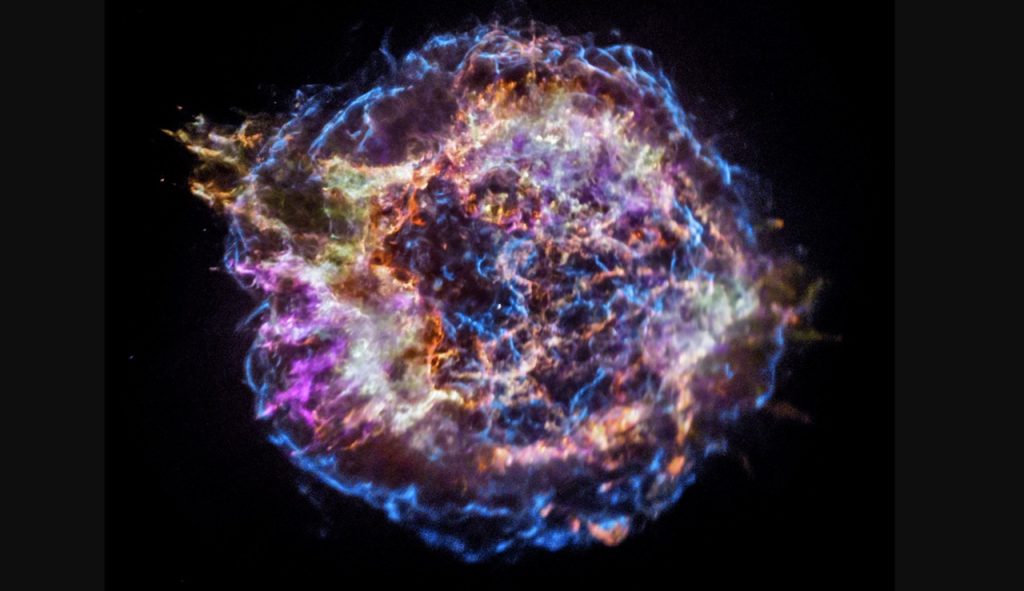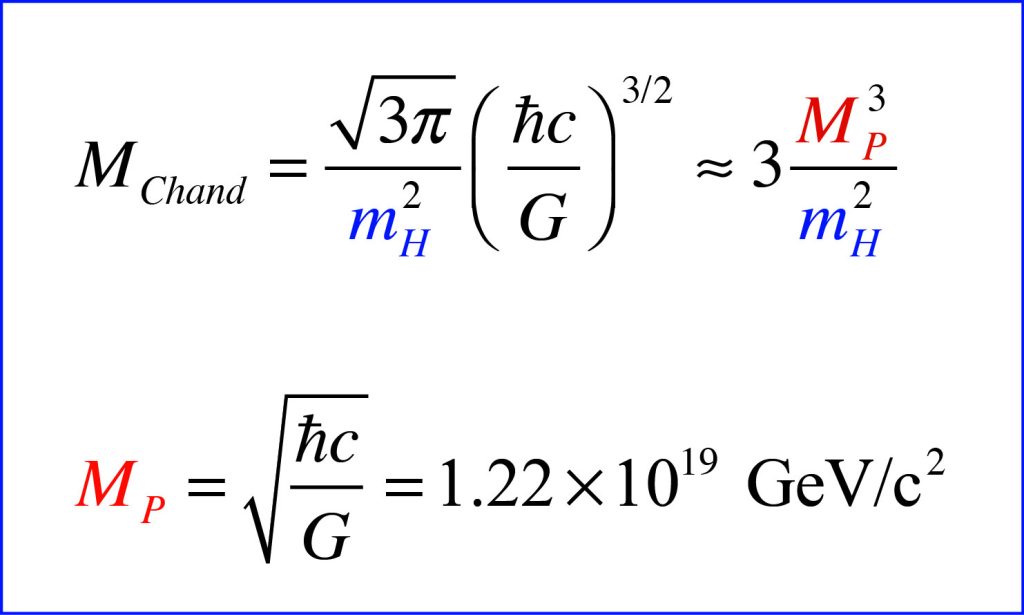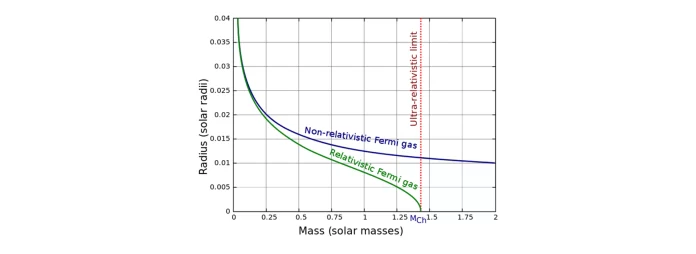Chandrasekhar Limit: Mysteries of Stellar Collapse Unravel- Outreinfo’s New Hot Topic
Highlights: Chandrasekhar limit – Stellar collapse mystery unravel
- Uncover the Chandrasekhar limit, a critical mass threshold beyond which stars succumb to gravitational collapse.
- Embark on a journey through stellar evolution, tracing the intricate dance between gravity and electron degeneracy pressure.
- Gain insights into the life and struggles of Subrahmanyan Chandrasekhar, a brilliant astrophysicist who faced immense opposition for his groundbreaking work.
- Explore the implications of the Chandrasekhar limit for understanding the formation of neutron stars and black holes.
We have all heard the story of Newton and the apple falling from a tree, which is said to have inspired his understanding of gravity. However, it is important to note that Newton did not suddenly grasp the theory of gravity. Rather, he spent years studying the motion of objects.

One of the key questions that Newton grappled with was why objects thrown upwards inevitably fall back to the ground. He also wondered why the Earth revolves around the Sun. The answer to both of these questions lay in the concept of gravity, which Newton defined as a force that attracts any two objects with mass.
Newton’s three laws of motion and gravity laid the foundation for modern physics. These laws provide a framework for understanding how objects move and interact with each other. In essence, Newton’s laws define the “rules” of physics that govern motion.
On October 19, 1910, Nobel Prize-winning scientist Subrahmanyan Chandrasekhar was born. Born in Lahore, India, Chandrasekhar graduated from Presidency College, Madras. After graduating, he decided to pursue further studies in Britain. During his voyage from India to Britain, he developed a theory in physics that is now known as the Chandrasekhar limit.
What is the Chandrasekhar limit?
The Chandrasekhar limit is the maximum mass that a white dwarf star can have without collapsing into a neutron star or a black hole. The limit is based on the principle that the outward pressure of electrons in a white dwarf star can only balance the inward force of gravity up to a certain point. If the mass of a white dwarf star exceeds the Chandrasekhar limit, the electrons can no longer resist the force of gravity, and the star collapses.
The Sun is currently in the main sequence stage of its life. During this stage, the Sun is fusing hydrogen into helium in its core. This process releases energy, which keeps the Sun shining. However, the Sun will eventually run out of hydrogen in its core. When this happens, the Sun will no longer be able to generate energy through fusion.
Without the outward pressure of fusion to counteract the inward force of gravity, the Sun’s core will collapse. This collapse will cause the outer layers of the Sun to expand, and the Sun will become a red giant. Eventually, the Sun will shed its outer layers and become a white dwarf.
The mass of the Sun is not large enough to exceed the Chandrasekhar limit. Therefore, the Sun will not collapse into a neutron star or a black hole. Instead, the Sun will eventually fade away and become a cold, dark object.
At first glance, it may seem that the density of the star will become so high that all of its molecules will collide with each other. However, this is where quantum mechanics comes into play. In 1925, British physicist Paul Dirac proposed that no two electrons can occupy the same quantum state, a principle known as the Pauli exclusion principle.
Therefore, even as the star collapses, some electrons will be forced into higher energy states. The resulting pressure, known as electron degeneracy pressure, is sufficient to support the star against further gravitational collapse.When the inward force of gravity is balanced by the outward force of electron degeneracy pressure, the star becomes a white dwarf.
In 1930, Indian physicist Subrahmanyan Chandrasekhar calculated that a white dwarf cannot have a mass greater than 1.44 times the mass of the sun. This is known as the Chandrasekhar limit.
If a star’s mass exceeds the Chandrasekhar limit, electron degeneracy pressure is not enough to prevent the star from collapsing into a neutron star or a black hole. He incorporated the theory of relativity into his calculations, and he came to a remarkable realization.
He acknowledged that electron pressure would indeed cause a star to become a white dwarf. However, he also determined that if a star’s mass exceeded a certain limit, electron pressure would be insufficient to prevent the star from collapsing. In such cases, the star would undergo a violent explosion, resulting in the formation of a neutron star or a black hole.
The density of such a star would become so immense that the mass equivalent of 10-20 suns would be confined within a mere 10-kilometer radius. For example, a teaspoon of neutron star material would weigh approximately 40 million tons. The mass at which a star collapses into a neutron star or a black hole is known as the Chandrasekhar limit. This limit is equal to 1.4 times the mass of our Sun.
When Chandrasekhar arrived at Cambridge University for his studies, he was denied the opportunity to publish his research by Ralph Fowler. Chandrasekhar subsequently sought the support of other scientists, but he was met with similar resistance. In this predicament, Chandrasekhar sought the guidance of a British scientist who played a pivotal role in the discovery of neutrons.
Chandrasekhar’s research was inspired during his Cambridge days. In 1935, he was invited to present his research paper before the Royal Astronomical Society. The day before the meeting, he learned that all the leading scientists in the field of physics would be in attendance. Chandrasekhar presented his research paper, in which he stated that no star of any kind could remain stable above a certain mass.
Eddington and other scientists immediately opposed Chandrasekhar’s ideas. Chandrasekhar was not given the opportunity to respond to their objections, even though it was his right to do so. For many years to come, Eddington and other scientists continued to oppose Chandrasekhar’s theory.
After years of deliberation, Eddington finally conceded that Chandrasekhar’s theory had not been subjected to any experiments that could confirm or refute it. However, he did not retract his opposition to the theory. The famous astronomer of that time, Zaira Twitmyer, supported Chandrasekhar and presented evidence in favor of his theory. However, most of the scientific community did not take notice of her work.

The events of these years suggest that Chandrasekhar may have been treated unfairly. During a meeting in 1939, Eddington apologized to Chandrasekhar. Chandrasekhar asked Eddington if his opinion on the Chandrasekhar limit had changed. Eddington replied that his opinion had not changed, but he still felt the need to apologize. Chandrasekhar then asked Eddington why he was apologizing if his opinion had not changed. Eddington did not provide a clear answer, and Chandrasekhar left the meeting.
Some sources have suggested that Eddington’s behavior may have been influenced by racial prejudice. Chandrasekhar himself has written about the parallels between the caste system in India and the scientific community’s treatment of minority scientists.
Despite the challenges he faced, Chandrasekhar made significant contributions to the field of astrophysics. He was awarded the Nobel Prize in Physics in 1983. He became a naturalized US citizen in 1953 and remained in the United States until his death in 1995.
For more information on space and science – click here

